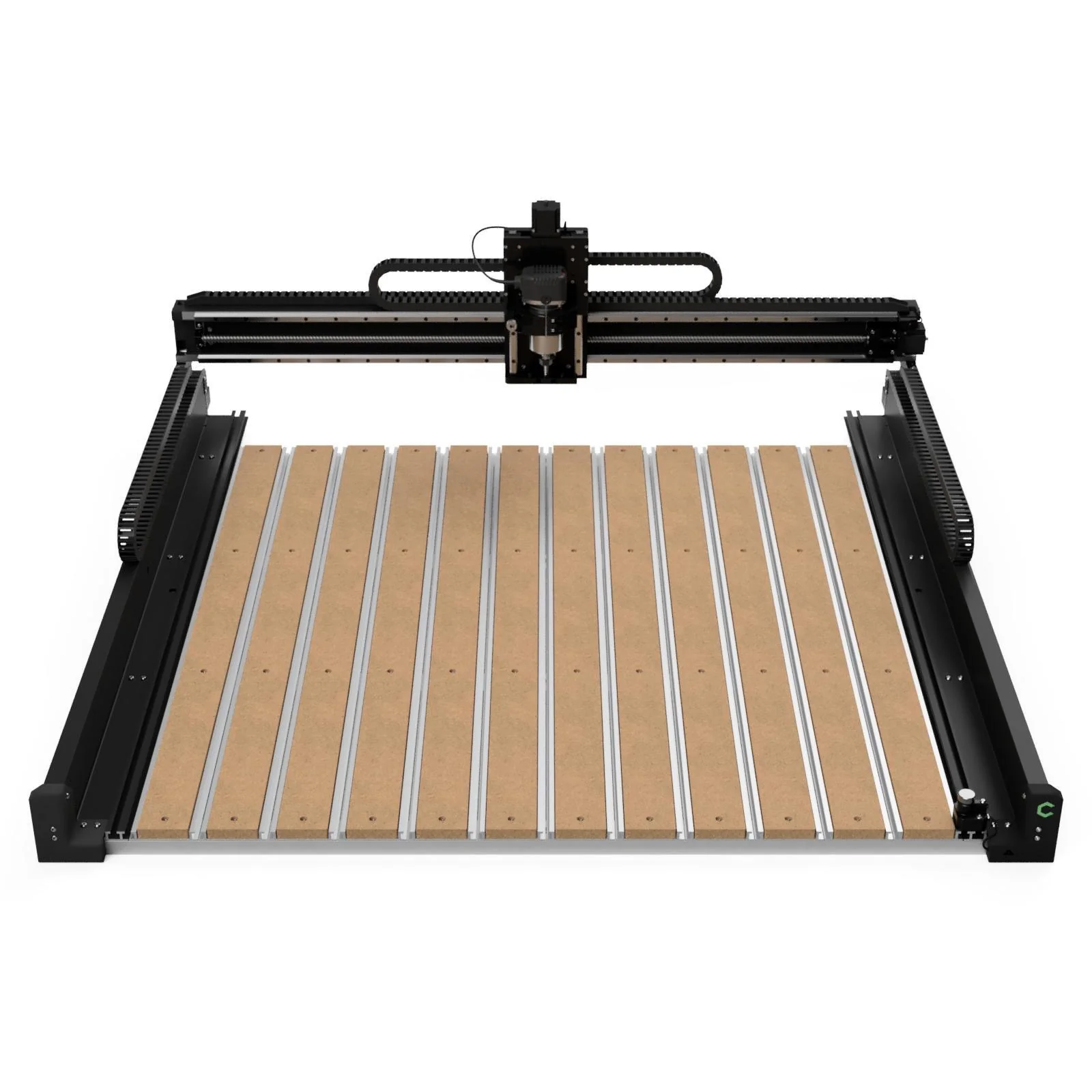Do NOT leave the CNC router unattended while running. You may pause the cutting in the Carbide Create software if you must step away for a moment.
Keep your body and clothing clear of the workspace, and keep the workbed free of other obstructions.
Press the Emergency Stop button if you need to immediately power down the entire machine.
